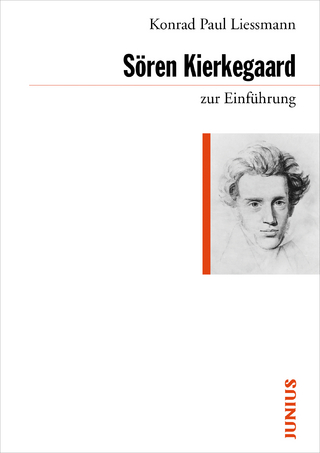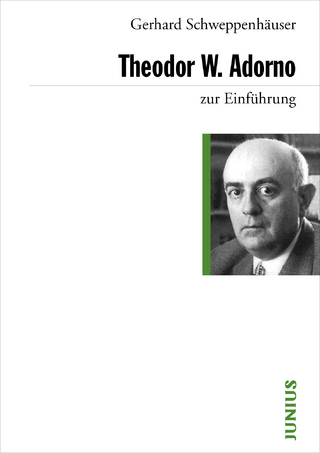
The New Vienna School of Art History
Fulfilling the Promise of Analytic Holism
Seiten
2023
Edinburgh University Press (Verlag)
978-1-4744-8976-8 (ISBN)
Edinburgh University Press (Verlag)
978-1-4744-8976-8 (ISBN)
An account of the theory and practice of practitioners of the so-called second" or "younger" Viennese school, associated with Hans Sedlmayr and Otto P cht, demonstrating the strong dependence of these writers on the work of Gestalt psychology.
"
The New Vienna School was and is the image-based alternative to iconology
Explains and contextualizes the Gestalt theoretical basis of the New Vienna School
Highlights the value of a Gestalt critical realism approach over positivism
Models a visuality-based method in distinct case studies showing the breadth and depth of the New Vienna School
Demystifies of the commitments of the Vienna School to structure" and "holism"
Explains the wider "Strukturforschung" school beyond Sedlmayr and P cht which shows it to be a significant cultural phenomenon rather than a brief historical experiment
This book is an account of the theory and practice of practitioners of the so-called "second" or "younger" Viennese school associated with Hans Sedlmayr and Otto P cht and their short-lived journal, Kunstwissenschaftliche Forschungen. It demonstrates the strong dependence of these writers on the work of Gestalt psychology which was emerging at the time. Gestalt theory emerges as the master key to interpreting Sedlmayr and P cht's ideas about art and history and how it affected their practices.
This fresh interpretive apparatus casts light on the power and originality of Sedlmayr's and P cht's theoretical and empirical writings, revealing a practice-based approach to history that is more attuned to the visuality of art.
Verstegen demonstrates the existence of a genealogy of Vienna formalism coursing throughout most of the twentieth century, encompassing Johannes Wilde and his students at the Courtauld as well as Otto Demus in Byzantine studies. By bringing Gestalt theory to the surface, he dispels misunderstandings about the Vienna School theory and attains a deeper understanding of the promise that a Gestalt analytic holism a non-intuitionist account of the relational logic of sense is offered.
"
"
The New Vienna School was and is the image-based alternative to iconology
Explains and contextualizes the Gestalt theoretical basis of the New Vienna School
Highlights the value of a Gestalt critical realism approach over positivism
Models a visuality-based method in distinct case studies showing the breadth and depth of the New Vienna School
Demystifies of the commitments of the Vienna School to structure" and "holism"
Explains the wider "Strukturforschung" school beyond Sedlmayr and P cht which shows it to be a significant cultural phenomenon rather than a brief historical experiment
This book is an account of the theory and practice of practitioners of the so-called "second" or "younger" Viennese school associated with Hans Sedlmayr and Otto P cht and their short-lived journal, Kunstwissenschaftliche Forschungen. It demonstrates the strong dependence of these writers on the work of Gestalt psychology which was emerging at the time. Gestalt theory emerges as the master key to interpreting Sedlmayr and P cht's ideas about art and history and how it affected their practices.
This fresh interpretive apparatus casts light on the power and originality of Sedlmayr's and P cht's theoretical and empirical writings, revealing a practice-based approach to history that is more attuned to the visuality of art.
Verstegen demonstrates the existence of a genealogy of Vienna formalism coursing throughout most of the twentieth century, encompassing Johannes Wilde and his students at the Courtauld as well as Otto Demus in Byzantine studies. By bringing Gestalt theory to the surface, he dispels misunderstandings about the Vienna School theory and attains a deeper understanding of the promise that a Gestalt analytic holism a non-intuitionist account of the relational logic of sense is offered.
"
Ian Verstegen is Associate Director of Visual Studies at University of Pennsylvania. Trained in Italian Renaissance art history, he also writes on art theory and historiography. He is the author of Arnheim, Gestalt and Art: A Psychological Theory (2004) and Arnheim, Gestalt and Media: An Ontological Theory (2018).
| Erscheinungsdatum | 02.12.2022 |
|---|---|
| Reihe/Serie | Refractions |
| Zusatzinfo | 4 B/W illustrations 14 colour illustrations 6 B/W line art 14 colour and 4 B&W images, 6 B&W line drawings |
| Verlagsort | Edinburgh |
| Sprache | englisch |
| Themenwelt | Kunst / Musik / Theater ► Kunstgeschichte / Kunststile |
| Geisteswissenschaften ► Philosophie ► Philosophie der Neuzeit | |
| ISBN-10 | 1-4744-8976-1 / 1474489761 |
| ISBN-13 | 978-1-4744-8976-8 / 9781474489768 |
| Zustand | Neuware |
| Informationen gemäß Produktsicherheitsverordnung (GPSR) | |
| Haben Sie eine Frage zum Produkt? |
Mehr entdecken
aus dem Bereich
aus dem Bereich


